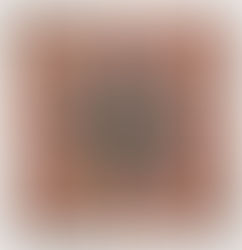top of page
< Back
Outsider Art Fair, New York, 2024
February 29, 2024
March 3, 2024
-
FEATURING: Ralph Fasanella, Harold William Ibach, Edgar Tolson, Sister Gertrude Morgan, Eddie Arning, William Howard Finster & Hunter Muldoon
Previous
Next


AFRICAN AMERICAN QUILT
Star Pattern, c. 1900
Cut & sewn cotton
H 78 x W 68, inches
Cut & sewn cotton
H 78 x W 68, inches


RALPH FASANELLA (1914-1997)
Baseball, Holy Cow
1996
Oil on Canvas
26 x 30, inches
Signed & dated lower right
RALPH FASANELLA (1914-1997) celebrated the common man and tackled complex issues of postwar America in colorful, socially minded paintings. Fasanella developed an astute and accessible style that reflected his affiliation with, and commitment to, the struggles waged by the working class for a dignified life.
In addition to the working class, Mr. Fasanella’s other great theme
was baseball. He loved the game, with some of that excitement
coming across in “Baseball, Holy Cow”, (1996) a marvelous, cheerful
work showing the pitcher in motion & batter ready with the crowd waiting in anticipation in the background.
1996
Oil on Canvas
26 x 30, inches
Signed & dated lower right
RALPH FASANELLA (1914-1997) celebrated the common man and tackled complex issues of postwar America in colorful, socially minded paintings. Fasanella developed an astute and accessible style that reflected his affiliation with, and commitment to, the struggles waged by the working class for a dignified life.
In addition to the working class, Mr. Fasanella’s other great theme
was baseball. He loved the game, with some of that excitement
coming across in “Baseball, Holy Cow”, (1996) a marvelous, cheerful
work showing the pitcher in motion & batter ready with the crowd waiting in anticipation in the background.


RALPH FASANELLA (1914-1997)
Nathan’s, Restaurant Scene Study
1991
Marker, graphite on paper
H 14 x W 16-1/2, inches
Signed & dated lower right
1991
Marker, graphite on paper
H 14 x W 16-1/2, inches
Signed & dated lower right


EDDIE ARNING (1898-1993)
Best Damned Cowboy in the World, c. 1970
Oil Pastel on Woven Paper
H 19 x W 25, inches
Oil Pastel on Woven Paper
H 19 x W 25, inches


1960'S FLAG CHAIR
Maker Unknown
New Hampshire Origin
Hand Carved Wood, Fabric, Found Material, Paint Female
silhouette sides, red pumps base
H 44 x W 21 x D 22, inches
View 1
New Hampshire Origin
Hand Carved Wood, Fabric, Found Material, Paint Female
silhouette sides, red pumps base
H 44 x W 21 x D 22, inches
View 1


1960'S FLAG CHAIR
Maker Unknown
New Hampshire Origin
Hand Carved Wood, Fabric, Found Material, Paint Female
silhouette sides, red pumps base
H 44 x W 21 x D 22, inches
View 2
New Hampshire Origin
Hand Carved Wood, Fabric, Found Material, Paint Female
silhouette sides, red pumps base
H 44 x W 21 x D 22, inches
View 2


TIN MAN
American
c. 1930
Tinned sheet iron, original patina
H 74 x W 23 1⁄2 x D 10 inches
In subject, pose, and life-sized scale this figure is akin to the tin man made circa 1930 by David Goldsmith (1901-1980) displayed in the front window of his West End Sheet Metal and Roofing Works in Long Island City, New York. Goldsmith’s tin man has achieved an iconic stature through illustration in exhibition catalogs and books.
Within the universe of folk-art tin men, ours and the one made by David Goldsmith stand out as unique for their representational form of a 1920s dandy and mastery of the techniques of construction.
Unlike ours, typical folk art tin men were fashioned from found parts. In design they range from assemblages in the style of the tin man from “The Wizard of Oz” to modernistic robot-like abstractions. Examples of the latter can be seen in the noted Hemphill collection at the Smithsonian and Hall collection at The Milwaukee Art Museum
c. 1930
Tinned sheet iron, original patina
H 74 x W 23 1⁄2 x D 10 inches
In subject, pose, and life-sized scale this figure is akin to the tin man made circa 1930 by David Goldsmith (1901-1980) displayed in the front window of his West End Sheet Metal and Roofing Works in Long Island City, New York. Goldsmith’s tin man has achieved an iconic stature through illustration in exhibition catalogs and books.
Within the universe of folk-art tin men, ours and the one made by David Goldsmith stand out as unique for their representational form of a 1920s dandy and mastery of the techniques of construction.
Unlike ours, typical folk art tin men were fashioned from found parts. In design they range from assemblages in the style of the tin man from “The Wizard of Oz” to modernistic robot-like abstractions. Examples of the latter can be seen in the noted Hemphill collection at the Smithsonian and Hall collection at The Milwaukee Art Museum


EDDIE ARNING (1898-1993)
A Pretty Good Teacher for a Cat
c. 1968
Cray-pas on paper
Paper: H 20 x W 26
Frame: H 23 x W 29, inches
Eddie Arning Inventory: #1751
c. 1968
Cray-pas on paper
Paper: H 20 x W 26
Frame: H 23 x W 29, inches
Eddie Arning Inventory: #1751


HUNTER MULDOON
Window #1
2022
Wood, glass, enamel paint, metal
H 32 x W 32 x D 5.25, inches
View 1
HUNTER MULDOON: Windows from abandon neighborhood houses are the new foundation for the layered wall constructions of Hunter Muldoon. Reverse painting on glass is one of the techniques Hunter deploys in alerting the viewer to the density of history contained within. These compositions evoke a wide range of decidedly urban transformations at once, physical in form and mystical in surface.
Hunter was born and raised in the historic Corktown neighborhood in Detroit Michigan. Having grown up in a time when Detroit felt very much so forgotten, he connects his work to that past,
breathing new life into objects found scattered throughout the city. Working primarily on found windows from old/abandoned homes in the area, Hunter applies a variety of techniques from reverse glass painting to mixed media construction and assemblage to create his complex images.
2022
Wood, glass, enamel paint, metal
H 32 x W 32 x D 5.25, inches
View 1
HUNTER MULDOON: Windows from abandon neighborhood houses are the new foundation for the layered wall constructions of Hunter Muldoon. Reverse painting on glass is one of the techniques Hunter deploys in alerting the viewer to the density of history contained within. These compositions evoke a wide range of decidedly urban transformations at once, physical in form and mystical in surface.
Hunter was born and raised in the historic Corktown neighborhood in Detroit Michigan. Having grown up in a time when Detroit felt very much so forgotten, he connects his work to that past,
breathing new life into objects found scattered throughout the city. Working primarily on found windows from old/abandoned homes in the area, Hunter applies a variety of techniques from reverse glass painting to mixed media construction and assemblage to create his complex images.


HUNTER MULDOON
Window #1
2022
Wood, glass, enamel paint, metal
H 32 x W 32 x D 5.25, inches
View 2
2022
Wood, glass, enamel paint, metal
H 32 x W 32 x D 5.25, inches
View 2


CARVED FIGURE OF A MAN WITH ARTICULATED ARMS
20th Century
Oregon origin
Hand carved wood, bark, marble eyes
H 38 x W 12 x D 8, inches
View 1
Oregon origin
Hand carved wood, bark, marble eyes
H 38 x W 12 x D 8, inches
View 1


CARVED FIGURE OF A MAN WITH ARTICULATED ARMS
20th Century
Oregon origin
Hand carved wood, bark, marble eyes
H 38 x W 12 x D 8, inches
View 2
Oregon origin
Hand carved wood, bark, marble eyes
H 38 x W 12 x D 8, inches
View 2


CARVED FIGURE OF A MAN WITH ARTICULATED ARMS
20th Century
Oregon origin
Hand carved wood, bark, marble eyes
H 38 x W 12 x D 8, inches
View 3
Oregon origin
Hand carved wood, bark, marble eyes
H 38 x W 12 x D 8, inches
View 3


FLAG CASE WITH ELECTRIC CROSS (REMOVABLE) BELONGING TO REVIVAL PREACHER
Indiana Origin
c. 1940's
Wood, Paint, Mixed Media
Case: H 20 x W 19 x D 4, inches Cross: H 16 W 15 x D 4, inches
View 1
c. 1940's
Wood, Paint, Mixed Media
Case: H 20 x W 19 x D 4, inches Cross: H 16 W 15 x D 4, inches
View 1


FLAG CASE WITH ELECTRIC CROSS (REMOVABLE) BELONGING TO REVIVAL PREACHER
Indiana Origin
c. 1940's
Wood, Paint, Mixed Media
Case: H 20 x W 19 x D 4, inches Cross: H 16 W 15 x D 4, inches
View 2
c. 1940's
Wood, Paint, Mixed Media
Case: H 20 x W 19 x D 4, inches Cross: H 16 W 15 x D 4, inches
View 2


FLAG CASE WITH ELECTRIC CROSS (REMOVABLE) BELONGING TO REVIVAL PREACHER
Indiana Origin
c. 1940's
Wood, Paint, Mixed Media
Case: H 20 x W 19 x D 4, inches Cross: H 16 W 15 x D 4, inches
View 3
c. 1940's
Wood, Paint, Mixed Media
Case: H 20 x W 19 x D 4, inches Cross: H 16 W 15 x D 4, inches
View 3


FLAG CASE WITH ELECTRIC CROSS (REMOVABLE) BELONGING TO REVIVAL PREACHER
Indiana Origin
c. 1940's
Wood, Paint, Mixed Media
Case: H 20 x W 19 x D 4, inches Cross: H 16 W 15 x D 4, inches
View 4
c. 1940's
Wood, Paint, Mixed Media
Case: H 20 x W 19 x D 4, inches Cross: H 16 W 15 x D 4, inches
View 4
bottom of page